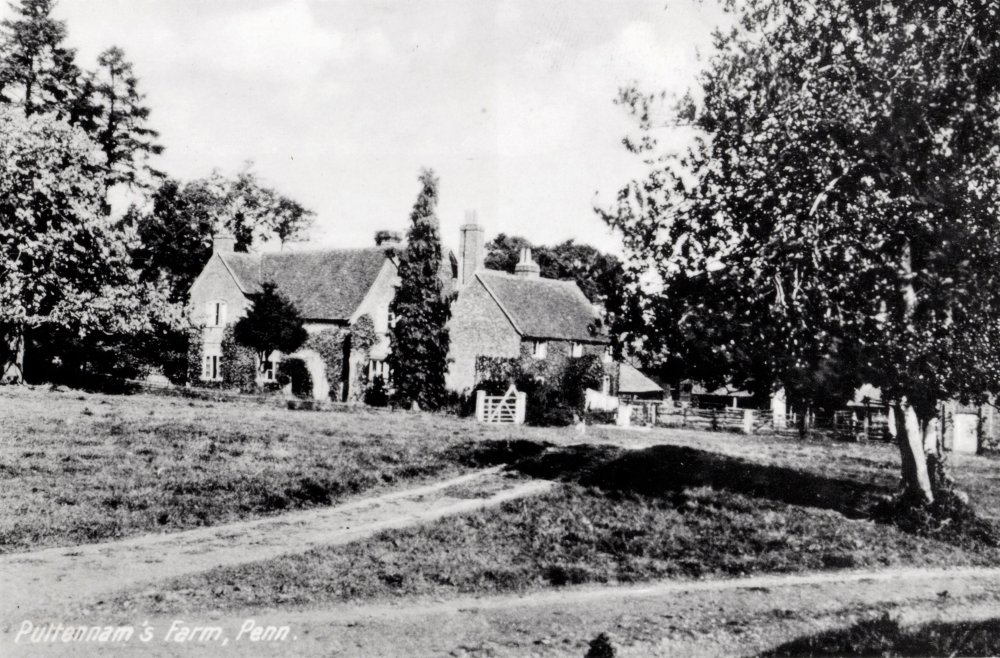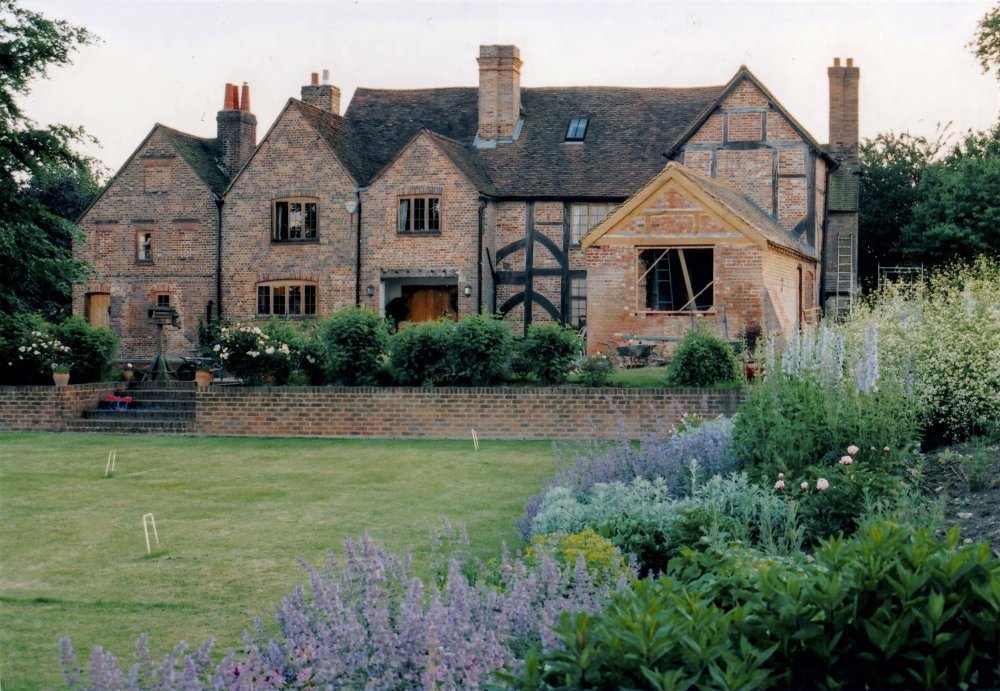In about the 1130s, Geoffrey de Turville, a wealthy baron, was the feudal overlord of the de la Penne family who held the manor of Penn from him, probably taking their name from the manor as was often the custom, although it is possible that they brought their name over from France where there are several places called Penne. Nine centuries later, the present Earl Howe is a descendant of these de la Pennes.
Geoffrey de Turville gave his younger son, William, the manor of Puttenham in Hertfordshire, and so William changed his name to de Puttenham. William’s daughter inherited a property in Penn from her father which we now know as Puttenham Place Farm because some of her Puttenham descendants lived there. The property can reasonably be identified in a grant of land in Penn in the year 1199 of a ‘croft called Withiheg which lies in the great field’.
This name, ‘Withiheg’ would seem to be preserved in the modern Witheridge Lane which, until the 19th century, did not continue on past Penbury up to the Crown, but used to turn down towards Church Knoll. The track from Church Knoll up the fold of the valley arrives at what is now Puttenham Place which a romantic imagination can still see as ‘lying in a great field’ surrounded by a high hedge of ‘withies’. The ancient house, latterly used as a farm, lies just ¼ mile behind the Red Lion down a track which used to be called Puts Lane.
This Turville/Puttenham property became a small independent manor in Penn, so that in 1305, the Hertfordshire de Puttenham heir was confirmed as holding the manors of Puttenham and Penn as heir to his father, by service (to the Turville overlords) of one knight’s fee and a pair of gilt spurs. In 1340, the property was the home of Sir Roger de Puttenham who was Knight of the Shire for Buckinghamshire eight times between 1355 & 1374, as well as Commissioner of the Peace four times between 1350 & 1367.
The property was described as a messuage, a carucate (a substantial area of land, perhaps 100 plus acres), 40 acres of woodland, farm buildings, a chapel and a bakehouse. There were 40 apple trees, 50 oak, 200 ash and 3,000 beech. Sir Roger’s son, Robert (c.1370-1444), made a very wealthy marriage to Margaret Warbelton. An architectural assessment by John Chenevix Trench, a leading local historian, who was editor of the Record of Bucks for several years, puts the older part of the house as c.1450 or conceivably a few years earlier, allowing us to identify Robert Puttenham as the likely builder. It was built as a medieval hall, open to the roof, with a central hearth and smoke escaping through a louvre in the roof. It had at least one oriel window.
This was the high point of the Penn-based Puttenhams. Robert’s son, Henry, was pardoned by King Henry VI for killing a man near Puttenham, and in 1466, was with his son and about 60 others in an assault on Missenden Abbey. He was the last to hold both Puttenham and their small manor in Penn together and thereafter three of his sons established separate lines. Two generation later, the 1522 Muster return recorded the Puttenhams (by then often spelled ‘Putnam’) as the third largest landowners in the parish after Penn and Segrave manors, but by 1594 their tax payment showed they had sold off half their property and Puttenham Place was sold the next year to John Pen, then the lord of the manor of Penn. The common field sold in the 1590s could perhaps be seen as the ‘great field’ of 1199. Earl Howe still owns Puttenham Place which is let on a very long lease.
The two brothers, William and Richard, who had inherited in 1589, continued to live in Penn and died there in the 1630s. William (d 1638) had two sons, Jos (b1592) and William (b 1593) of whom there is no further mention in Penn and it could be that they emigrated to the New World. More than a century ago, a well-known New England printing firm called Putnam visited England and tried, unsuccessfully, to buy the house from the then Earl Howe.
Miles Green (revised. Jan 2024)


